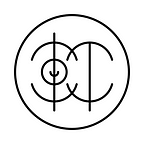The Sexing of the Gaians
Nobody knows when the parasite first infected the Gaians, but within a generation, everyone had it. The symptoms, after all, were delayed in onset, emerging a decade after infection, if not more. But when they did, they were phenomenal, even monstrous. Strange protuberances would begin to develop on an infected Gaian’s body, drastically altering their silhouette. Alopecia was common, with fur suddenly thinning in peculiar patterns. Musculature also contorted dramatically, bulging under the skin in some places, while softening in others. Pain from the rapidity of these changes was inevitable, and some infected even began to bleed regularly from excretory organs. These symptoms displayed a trimodal distribution, distinguishing the bodies of the infected into three general classes: the Thetas, Phis, and Psis.
Far worse than the physical changes were the symptoms that began to inflict the Gaians’ minds, symptoms that soon changed the very structure of their society. The Gaians had long reproduced communally, with each member of a community contributing seeds that contained portions of their genetic material. These seeds would be planted and incubated in the earth, merging to form a bulb. They would then tend to this bulb until it sprouted — a glorious, celebrated moment — into one of their young. Thereafter, a child of Gaia was raised collectively, having between three and five adult Gaians who took care of and bonded deeply with them, but a plethora more who played with and mentored them as they grew and matured. All of this changed after the parasite took root.
As an afflicted Gaian’s body began to metamorphose, their desires too would transform. Quite suddenly, they would find themself fiercely attracted to the bodies of other infected, odd protuberances and all. But not just any bodies — with some exceptions, the Thetas desired the Phis and the Psis, while the Phis and the Psis desired each other. That is, until the peculiar event of Phi-Psi pair bonding happened, at which point the pair would begin to look for a suitable Theta, forming eventually a triad.
Triad formation brought chaos to Gaian society, as Phis competed for the attentions of Psis and vice versa, and Thetas suffered neglect until they found a Phi-Psi pair willing to take them in. Life as a Gaian became rife with emotions that had once hardly been known: lust, jealousy, and loneliness. And this all continued, because triads were how the parasite symbiotically reproduced. Indeed, the infected were incapable of reproducing otherwise. Instead of mixing seed communally as Gaians once did, triads were driven to engage in a bizarre ritual of physical intercourse, one which brought them great pleasure. Through intercourse, their shared genetic material — along with that of the parasites — was implanted within the Theta’s body. The Theta would then incubate this seed, until finally it sprouted and was ejected excruciatingly from the Theta’s body. The children of Gaia were now born — each with a parasite already in them.
Many generations later, this way of life had become the norm. Gaian society had restructured itself into a socio-biological hierarchy, with the Phis and Psis sharing power at the top, and the Thetas as subjugated child-bearers. The old communal way of life was largely forgotten, and the few scholars who studied it were often suppressed. The initial chaos caused by sexual trimorphism had given way to a strict, rule-governed system of triad courtship and family life. The adolescent metamorphosis induced by the parasite was accepted as an inevitable, if agonizing, part of growing up, and the parasite itself was now euphemistically called a symbiont. Society had become stable again, and those in power did not wish to see it upset by the old ways.
Of course, not every child of Gaia went through the metamorphosis willingly. Many bore the distress only to emerge traumatized, unable to reconcile the physique and psyche the parasite gave them with who they had been before. Some reacted more strongly still, crying out in terror and screaming for the parasite to be removed. As their bodies revolted, a few even launched counter-assaults, trying to remake their bodies into how they saw themselves. These children were drugged and sedated by Gaian doctors, in hopes of reducing the agony. But if they made it through, the numbness of their adolescence often remained with them throughout life. And if the drugs did not work on a child, the doctors would remove the parasite the only way they knew how: killing it, along with its host.
This piece was intended as a prelude to an unfinished essay, “Voluntary Puberty”, on the autonomy that youth should have over their bodies and genders. I am publishing it now in light of the decision by the UK High Court that young people under 15 cannot provide “informed consent” to puberty blockers, and must thus request a court for permission. My hope is that it will help expose some of the deeply cisnormative assumptions that underlie the court’s misguided decision. After all, nobody asked me for my “informed consent” before allowing my body to betray me. For a less allegorical critique, Florence Ashley has also written eloquently about everything wrong with the UK High Court’s ruling.
An interpretive note: I disavow any sex negativity or biological determinism that may be implied by this story. While the resonances with original sin are not unintended, I am not a Skoptsy Christian. Unlike the parasitized Gaians, humans can and do embody our desires in egalitarian and mutually fulfilling ways. But this triumph of the neocortex over the hypothalamus is a hard-won evolutionary, cultural, and technological feat. And for those of us who are trans, it is a feat not fully accomplished. The point is not that humans are enslaved to our sexual biology — the point is that we are not quite free enough.
